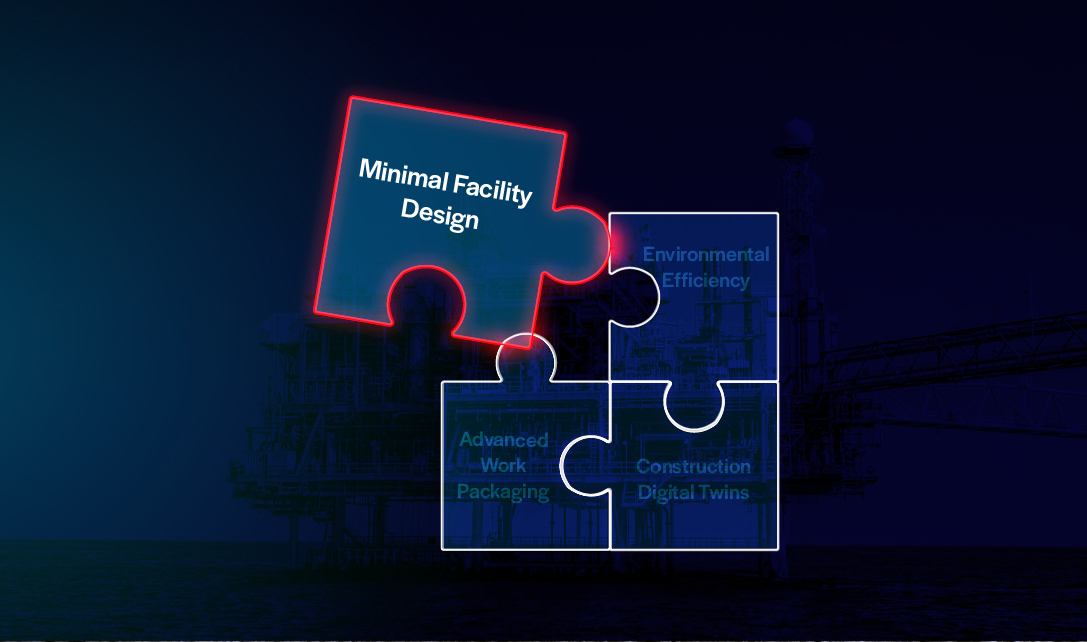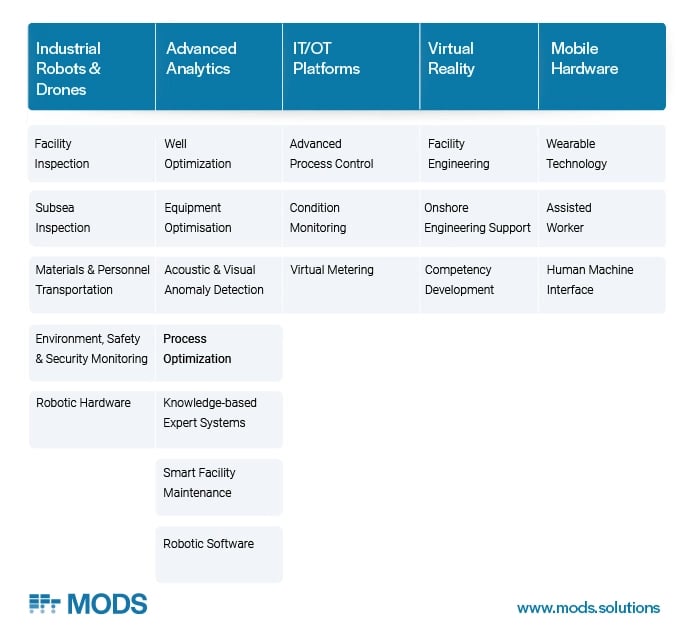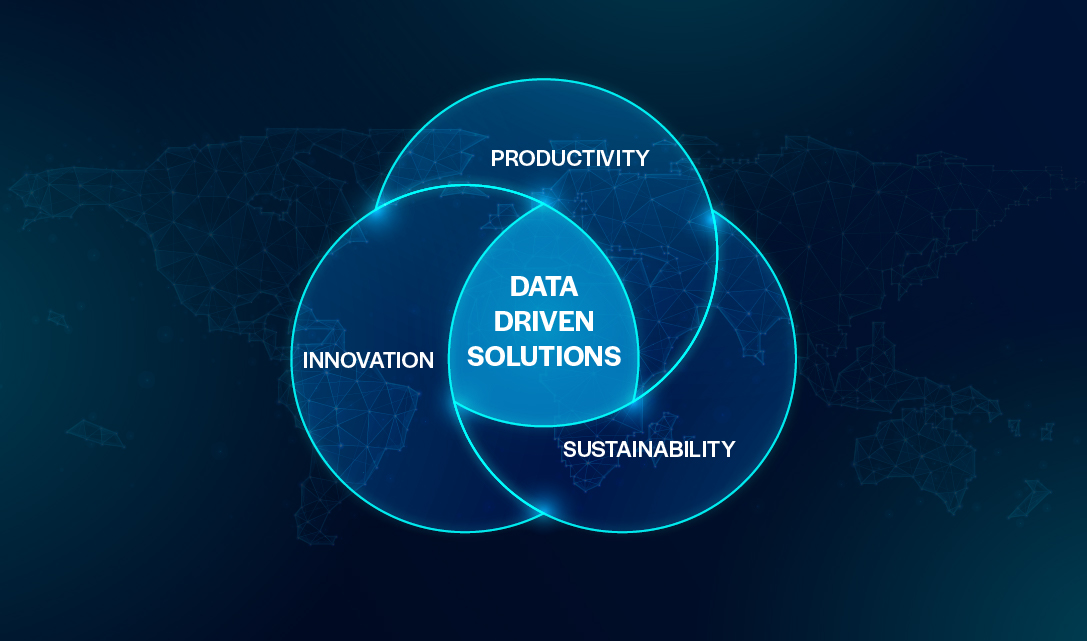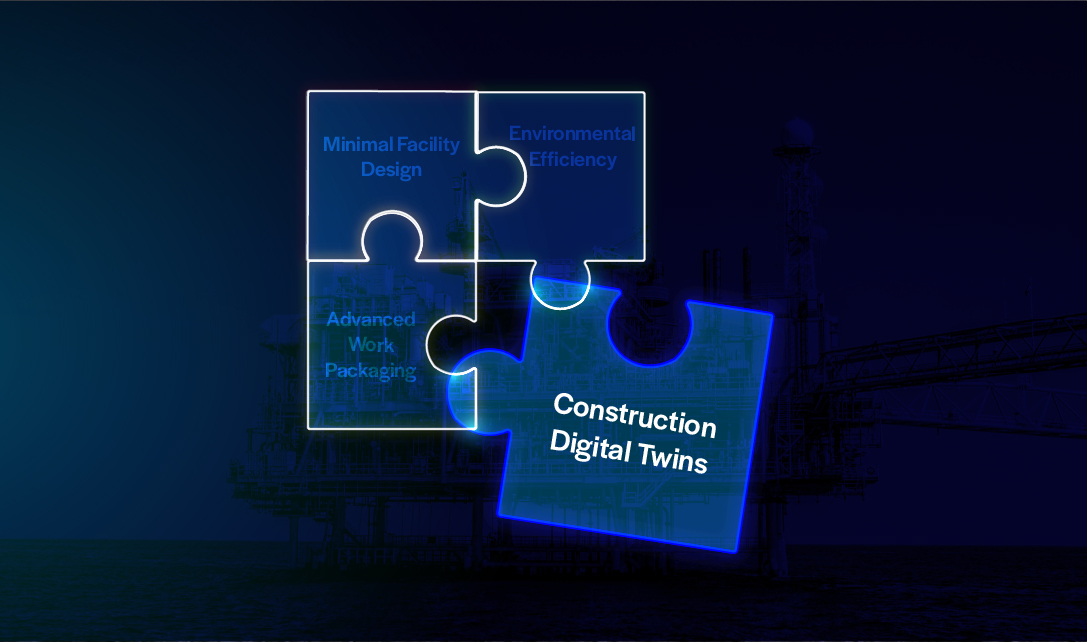Digital Completions in Plant Modifications and Upgrades
Unlike greenfield or any new build construction projects, plant modifications and upgrades present a unique set of challenges. Work is carried out...
3 min read
 Lisa De Vellis, PE
:
Jul 6, 2022 12:26:51 PM
Lisa De Vellis, PE
:
Jul 6, 2022 12:26:51 PM

This blog is the third in a four-part series looking at the following energy-sector development trends:
The trends of environmental efficiency and Advanced Work Packaging (AWP) principles and best practices are only as beneficial to construction execution and project management as the facility design allows. Meaning that technological solutions that enhance workflow efficiencies are beholden to the infrastructure limitations in which they operate. Conversely, innovative facility design enables a broader and more powerful range of technological solutions in the build, operation and maintenance of such facilities.
This brings us to our third topic, minimal facility design, which is divided into four parts:
Industrial design needs to evolve for energy efficiency and business viability. Digital technologies on which energy facilities of the future will increasingly rely include industrial robots and drones, advanced analytics, combined information and operational technology (IT/OT) platforms, virtual realities and mobile hardware.

Asset operations will be increasingly dependent on technological solutions that monitor conditions and optimize equipment performance. Further, virtual realities such as industrial 3D models, including digital twins, as well as wearable and other mobile technologies, bolster onshore engineering support.
As data-driven technological solutions increase, so too do options to simplify construction processes and workflows. This powers the quest for asset standardization and modularity. Standardization and modularity are effectively a plug-and-play approach to construction and de-construction of assets, allowing for flexible and responsive business and operational decisions.
Facilities housing complex processes, and this goes beyond the energy sector, honor sustainability principles and want to reduce fabrication and installation costs, as well as energy expenditures therein. Prefabricated and modular components are therefore coming into vogue.
This doesn’t only benefit the install. More components, particularly those which are non-standardized, implicate higher maintenance. More infrastructure equates to more maintenance, so the economic and environmental impetus for standardization and modularity is obvious. The future may even see a move towards totally unmanned offshore platforms, for example, which in order to be successful would need to capitalize on a wide range of existing and emerging digital technologies.
Visual project management is a powerful yet user-friendly way to visualize project data. Integral to the aforementioned virtual realities, visual project management requires data capture. Information must be system-ready so that the data is reliable, accessible and able to be queried.
Digitizing information then getting data into a structured database so that it is consumable is a significant challenge. And the data must be transparent, accurate and secure. Overcoming these challenges behind digitization is essential to realize the benefits of visual project management.
Take digital twins, for example, which are a data-laden visual representation of a physical asset in all dimensions (including time). These digital replicas optimize people, systems (such as IT/OT), workflows and processes. Bringing all of these possibilities together in a digital twin environment allows for massive scope: automating workflows, facility risk-mapping, anomaly detection and alerts that, in turn, catalyze the necessary actions.
With so much data attached to the infrastructure and workings of complex facilities, visualization massively improves the ability to make sense of information as well as to communicate it to others, regardless as to their physical location relative to the asset.
The way a facility is designed, from the vision and degree of innovation to the materials, component specifications and extent of modularity, dictates construction methods and approaches. Technical, forward-looking facilities encourage innovative construction execution, as well as operations and maintenance methods and practices.
As complex facilities embrace technological innovation, automation comes to the fore. This will see a reduction in manual and paper-based processes. Whether it’s the use of prefabricated and modular components, construction and/or facility digital twins, industrial drones and robots, all of these technological innovations rely on data. Modern engineering that embraces minimal facility design and technological advances minimizes environmental impact.
Clearly, to use any of these tools to good effect, information must be digitized. And data must be collected, organized and stored in a way that is suitable for any future needs and uses. It all comes back to data integrity.
Facilities of the future will trend minimal, benefiting initially from full digitization and the elimination of antiquated paper-based processes. As DX journeys progress for the builds of complex facilities, design-build and operational practices will increasingly rely on the more advanced digitalization methods including visual project management and automation.
In that vein, the final topic in this future trends series will be on construction digital twins.

Unlike greenfield or any new build construction projects, plant modifications and upgrades present a unique set of challenges. Work is carried out...

Turnarounds and shutdowns are among the most critical—and stressful—phases in the management and operation of industrial assets. These planned...

Offshore decommissioning and asset retirement present significant logistical, regulatory, safety, fiscal and reputational challenges. The process of...

Following socio-political pressures towards net zero, the war in Ukraine has compounded the direct need to advance energy development. EPC...

This blog is the continuation of Data-driven smart facilities and decarbonization towards a sustainable energy future.

This is the final blog in our four-part series addressing the following energy-sector development trends: